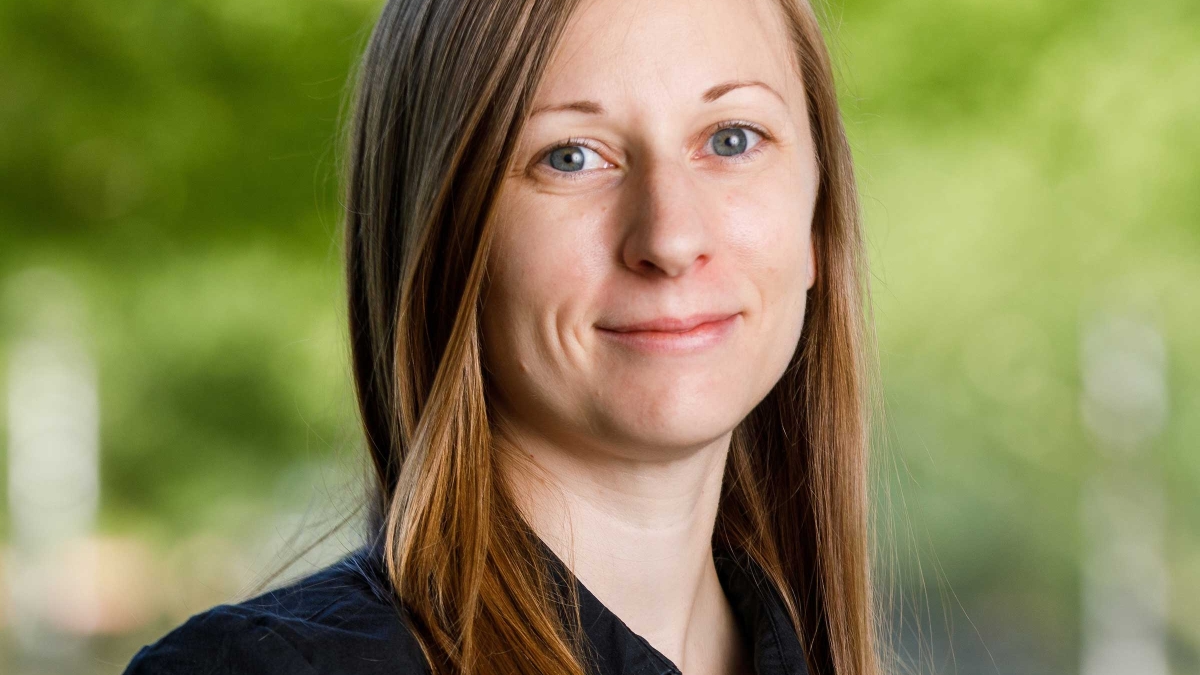Wastewater research grad to continue career at Biodesign Institute

Devin Bowes
Editor's note: This story is part of a series of profiles of notable spring 2022 graduates.
Being successful and learning how to tackle new ideas in research is often like playing sports, according to graduating Arizona State University student Devin Bowes.
Bowes, who played division II women’s lacrosse at West Chester University of Pennsylvania and had the opportunity to compete nationally, uses her athleticism in the lab.
“Research is both a test of endurance and speed. You have to learn when to pivot, let go and move on, while also learning when it is appropriate to continue to hang on through the finish line,” said Bowes, who is earning a PhD in biological design.
“At the end of the day, if you know why you’re putting in the work, and more importantly, if you understand the broader implications behind the work, then all of the pieces will eventually come together. I learned a lot about my passion for teaching and mentorship,” said Bowes, who was awarded the Dean’s Dissertation award by the Ira A. Fulton Schools of Engineering for her innovative research.
During her time in the School for Engineering of Matter, Transport and Energy, Bowes researched novel applications of wastewater-based epidemiology for assessing population nutrition, infectious disease and chronic illness. This was inspired by her work with the city of Tempe and the Biodesign Center for Environmental Health Engineering to design a COVID-19 dashboard based on wastewater.
Following her graduation, Bowes plans to stay at the Biodesign Institute as a post-doctoral research scholar, before eventually moving on to pursue a tenure-track faculty position at a major research university.
Question: What was your “aha” moment when you realized you wanted to study the field you majored in?
Answer: I worked in the field of nutrition in a number of different roles for several years before I started my doctoral degree here at ASU. In 2017, I worked as a nutritional counselor at a local Women, Infants, and Children (WIC) clinic here in the valley and witnessed many opportunities for improvement in public health and nutritional education that served as the driving force behind seeking a higher education. The experiences I had at WIC and other organizations are still what drive me to serve the community through education, research and empowerment.
Q: Why did you choose Biodesign?
A: I think we chose each other. I was at a time in my life when I felt I could do something to change the world and sought out higher education programs in nutrition at ASU, when I met Dr. Rolf Halden randomly one day in the spring and he told me about his research implementing wastewater-based epidemiology. A few days later, I was enrolled in a doctoral program and began working in EHE.
Q: Which professor taught you the most important lesson while at ASU?
A: I’ve had the great opportunity to learn from some really amazing professors and mentors here at ASU and was taught many insightful lessons. There are too many to call out by name.
Q: What’s the best piece of advice you’d give to those still in school?
A: Get organized! Get organized yesterday. Also, the 24-hour rule is extremely helpful when receiving feedback, whether after giving a talk or from journal article reviewers. Read through them, give yourself some time to think, and then respond.
Q: What was your favorite spot on campus, whether for studying, meeting friends or just thinking about life?
A: I really enjoy walking around the green space with the concrete art structure just outside of Biodesign. It’s a nice place to take a quick walk mid-day and think.
Q: If someone gave you $40 million to solve one problem on our planet, what would you tackle?
A: My initial response to this question is to tackle the issue of disparities in our food system. There are far too many people going hungry in the United States. If I was given $40 million dollars, I would find a way to sustainably feed all individuals.
Written by Marketing Assistant Anna Hague.
More Science and technology
Largest genetic chimpanzee study unveils how they’ve adapted to multiple habitats and disease
Chimpanzees are humans' closest living relatives, sharing about 98% of our DNA. Because of this, scientists can learn more about…

Beyond the 'Dragon Arc': Unveiling a treasure trove of hidden stars
NASA's James Webb Space Telescope (JWST) has set a new milestone: capturing images of over 40 individual stars in a galaxy so…

ASU selected as home and partner for CHIPS and Science Act-funded national facility for semiconductor advanced packaging
Following a week where a spirited effort by the Sun Devil football team captured the nation’s attention in the Peach Bowl, it is…

